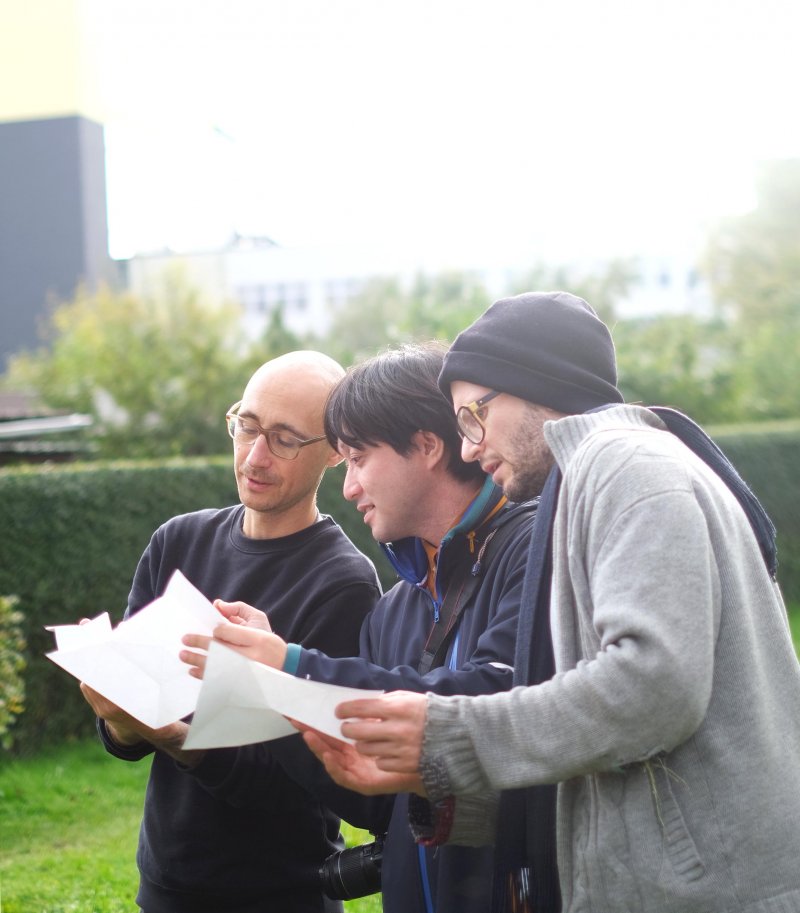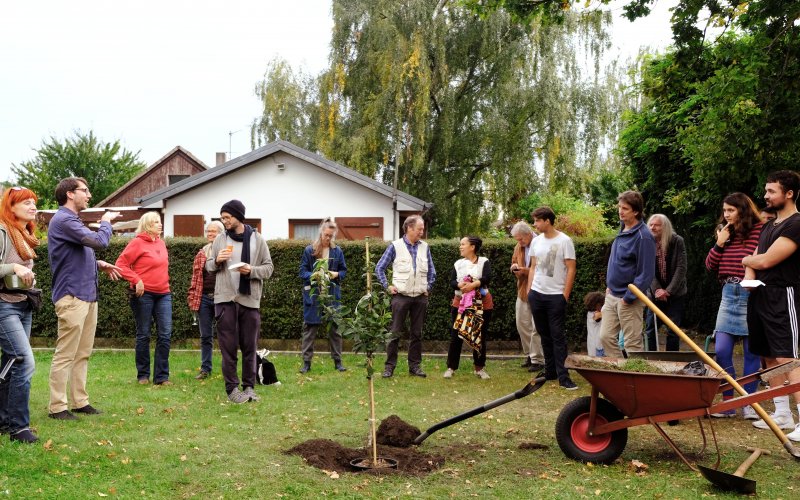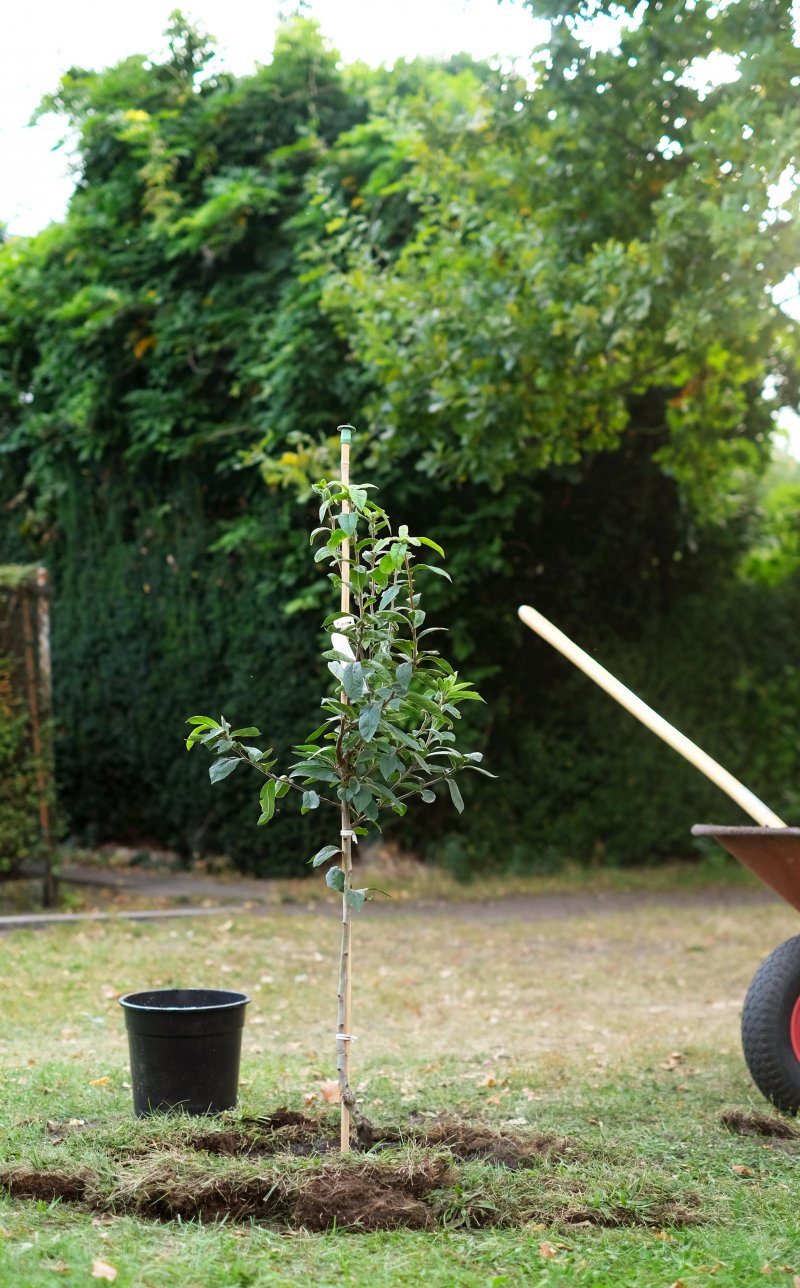Urban Nature - We are not alone. This city is full of life.
We encounter the city's life on every corner, while shopping, on the street or on the train. Even when we are supposedly alone at night, we never are. There is always a light burning in some house. Sometimes we can see a shadow behind a curtain. A person sitting on the sofa or preparing a meal in the kitchen.
Every one of us has come home late, has been the shadow behind the window. We know what it's like, a story is created in our minds that brings us closer to the person behind the window. The curtain may separate us and we may never have exchanged a word with each other, but through the story in our head we connect, make the lights companions for our journey.
And there are also the many silent companions:inside on our path. With every step we take, we pass them by. The small ones rest unnoticed in their nooks and crannies. The big ones, on the other hand, are hard to miss. They line our path, a single one perhaps marking our destination in the distance. It is an old tree, its branches stretching far between the houses. The lights behind the windows tell us stories of sleepless people. We can only guess what is going on in the trees. When we look at them, we recognise their growth, see the tall shape and the mantle of leaves, a broken branch, or even a naked open spot just above the ground, an old trunk wound. This also gives rise to stories in our heads, for example how a car once drove into this tree. Not on purpose, but just incidentally, because the radio was so loud when we parked. Maybe it wasn't so banal, but an emergency, a fire brigade that had no other place to put the rescue ladder.

The tree itself is then usually an extra in these stories, coincidentally in the middle of the situation or perhaps just an observer on the sidelines. We imagine what he must have experienced in the course of his life. How the houses grew around him. How people came together under the tree to settle disputes or make important decisions, perhaps it was soldiers who passed under them in an attempt to change the course of history. The long life of trees inspires us. It reaches back into past times that we only know from stories. The trees were there.
But we rarely know the story of a tree. Yet it tells it to us when we look at it. The story of the encounter with the woodpecker, which pecked out the annoying beetles from under the bark. How the woodpecker knocked on that one sore spot on the trunk every year, how it had created a hole after years of knocking. Crawled into the tree and built a nest inside. How the wind carried pollen from another tree to the tree and tickled its blossom with it, how the seed grew. How the tree stretched its branches between the houses, to where the sun always shines. It was not alone there. Other trees had also made out this gap and a silent battle broke out. The underdogs are now forgotten, but one can still make out where they must once have stood. A dent in the crown of the winning tree shows us the place where the deceased must have lived. If he had had a choice, perhaps he would have gladly avoided the battle, moved on to where there was enough light for his leaves and enough water for his roots. Could he have wanted to?
It is difficult for trees to even imagine something like wanting. They want to live, that's clear, in that they are similar to us. Drinking, eating, warmth. In that we are no different. But our wanting is directed towards a good, something that is good for us. When we humans lack food, when it gets unbearably hot and we are thirsty, then we go out and do what is necessary to achieve this good.
The trees lack most of what humans need to pursue their own well-being. But they assert themselves with such confidence that we do not recognise their erratic attempts to get the best out of life. Blindly they drive their roots into the earth. They first stretch out their branches and leaves in all directions. The nourishing sun will be somewhere. In the beginning they need little of it, they are still small and in their youth they have other needs than when they are big.

Even if trees seem blind to us, simply because they lack eyes, they have sufficient sensory apparatus beyond them. They can perceive light and dark and also movement. They can taste water with their root tips. They can smell and react to the pheromones of other trees or insects. By changing electrical charge potentials in the cells of their bark, they can feel how their barrel load moves above and below the ground, how well they can keep their balance. They even remember which side the wind usually blows from. Some memories, of particularly good times or a disaster, they can even pass on to their seeds.
However, their senses are rudimentary, it is more a feeling than a recognition, they react to the stimuli of their environment. But they are not clumsy in doing so. If water is available and they can reach it, they will muster the strength to do so. The side from which the light comes will be equipped with many leaves to increase the light yield. The side facing the wind will be made strong and will usually hold until the storm turns and strikes from a different direction than usual. But they always need an impulse from outside to do this. On their own, they just run a programme with different variables. A code that tells them what to do and, almost like a machine, the tree has to follow it.
These silent protagonists are at the mercy of circumstances, dependent on what they find. Yet they are not helpless. To a certain extent they can react. If a branch breaks, they sprout a new one. If the sun burns too strongly, they can make their leaves smaller and lighter. Helping fungi in the soil change the composition of the soil so that the trees get more of the nutrients they need. A tree can take a beating. Animals large and small are constantly gnawing at it, the shrinkage is priced in. They are strong, some can even break the walls and foundations of houses with their roots. But they always have to make do with what is there. They are very skilful at it. What they lack in movement they make up for in individuality. At the peak of its life, a tree has mastered its space and claimed it for itself. It stands there like no other. No other has experienced what it has experienced. Each one has felt the sun and wind differently, had different encounters. Each one can tell a different story.
In the here and now, many trees tell their stories very vividly. These stories are hard to miss. They tell us of a great change. The world around them is no longer the same as it was when they first pointed their shoot skywards. The sun is burning and there is a hot blanket of stone around them. They try to react as usual, but it all happens far too quickly. In their panic they shed the overheated leaves, abandoning whole branches and trunks, trying to shrink to suffice with the water they can find. But no matter how strong they are, they are not fast. Acceleration is against them.
Their only chance of change is left to chance and the law of large numbers. To move forward they must hope that one of them will be different, that one of them will find a place where it is better. Even if they knew where to look, they themselves will not be able to reach that place, so the offspring will have to do it. They throw their seeds away, hand them over to the wind, the rain, the animals, so that they take them with them. Try and error for the win! Hope is certain for them, but can they trust in the future?
Today we collected these seeds and built them a new house. The trees don't really need the house. We need it if we want to bring the trees into our world. We take them with us to walk a common path for one year.
If we collect the stories of the trees, we can perhaps come closer to them, build a connection with them, just as the story of the shadow behind the window brings us closer to the person behind it. It is an unequal relationship we are trying to build. They don't understand our stories. The idea sounds stupid, but it would be easier to have a conversation, maybe even make a friend, by ringing strangers' doors at night than by talking to a tree. No matter how well it knows us, how often it has noticed our presence, when we hurried past it in the morning, when we sat against its trunk in the shade of its leaves at noon, it can only communicate with us indirectly. What remains for us is to observe it, to learn from it. Even if the tree has no ears for us, we want to have eyes for it. To learn its history and to write a common history with it.
